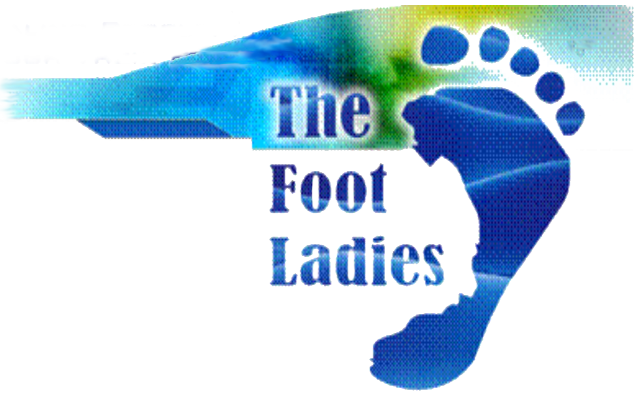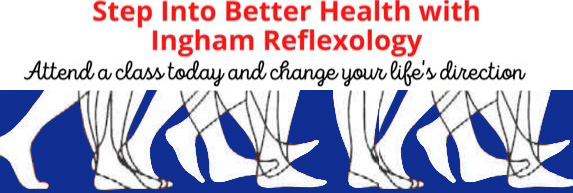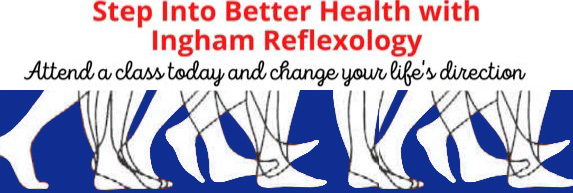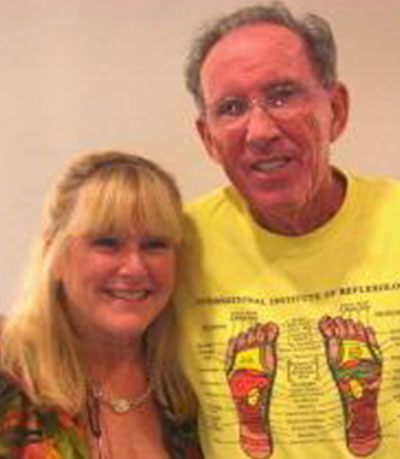What is Reflexology?
What is Reflexology?
What is Reflexology?
Reflexology is an art of stress reduction based on the work of three American physicians, Dr. William Fitzgerald in the 1900's,
Dr. Joe Shelby Riley and Physical Therapist, Eunice D. Ingham in the 1920's. Her nephew, Dwight C. Byers, continued her work
internationally until his passing in 2020 at the age of 91. Check out the real HISTORY of Reflexology.
Dr. Joe Shelby Riley and Physical Therapist, Eunice D. Ingham in the 1920's. Her nephew, Dwight C. Byers, continued her work
internationally until his passing in 2020 at the age of 91. Check out the real HISTORY of Reflexology.
First of all, it is NOT a foot massage....
Foot and Hand Reflexology is a science based on the principle that there are reflex areas on the hands and feet,
which correspond to all body parts.
The physical act of applying specific pressure using thumb, finger and hand techniques result in stress reduction,
which causes a physiological change in the body. We do not massage the feet.
Is there any scientific basis to Reflexology?
For more than a century now, an international array of documented scientific
work has validated the results of Reflexology, including:
Reflexology is used in European hospitals for pain management for terminally ill patients,
resulting in better quality of life with reduced pain.
Reflexology enhances the performance of U.S. athletes and reduces pain from injury and overwork.
C. Issel Reflexology; Art, Science & History.
In Great Britain, reflexology is part of the National Health Service.
Of the 26% of Danes who have tried reflexology as a complementary therapy, 73% have experienced health benefits,
including increased energy, improved mood and improved sleep.
Reflexology is a valuable tool for reducing the effects of Premenstrual Syndrome,
as reported in the Medical Journal of Obstetrics & Gynecology in 1993.
Continuing research shows Reflexology is gaining more respect and acceptance by scientists and health care professionals,
as a valid complimentary modality in the health field.
What does Reflexology do?
The Ingham Method® of Reflexology is used primarily for relaxing tension. It promotes the body's ability to adjust
and balance during times of stress. Simply taking time out to relax can help you let go of tension and enjoy a feeling
of restored balance in your mind and body.
Beyond relaxation, reflexology has been shown to improve poor circulation.
Improving circulation boosts the supply of oxygen and nutrients to your muscles and other tissues,
and speeds the elimination of waste products such as lactic acid and stress hormones.
This, in turn, reduces stress, muscle tension and soreness, decreases healing time for injuries and reduces swelling from injuries or illness.
It also improves poor circulation problems such as immune function, skin tone, and the ability to concentrate.
Because of this, many actual foot problems may be helped such as plantar fasciitis, ball of foot pain, heel pain, etc.
Can Reflexology make a condition worse?
No, it will not make any condition more acute. It helps nature to normalize body functions.
A Reflexology series decreases the stress that can affect your health. It is a safe effective way to Better Health.
In fact, it can also help sore feet!
Is any special equipment needed?
Only the practitioner's hands are used, making it a safe, simple, yet effective method without the use of gadgets.
Something that is sorely needed in our Low Touch, High Tech world.
Reflexology sessions are non-intrusive: no greasy oils are used and only your socks and shoes are removed.
What is a session like?
Your first session will likely begin with a brief introduction of reflexology and our work.
You will then be comfortably sitted in a reclining chair, as your practitioner begins to apply thumb or finger pressure to your feet.
Responses to reflexology vary widely. Certain areas may feel more sensitive or tender than others.
As we work the reflexes in your feet and you begin to relax, the tenderness may begin to lessen.
It is vital to stimulate all the reflexes; therefore we will not avoid the tender areas,
but will work within your comfort level in ways that minimize pain.
Always tell us if you feel any discomfort so the pressure applied to your feet can be adjusted.
After a session you may feel calm and relaxed or energized and rejuvenated.
Some people initially experience fatigue after a session,
but notice an increase of energy or a lessoning of stress over the following hours or days.
The more you receive reflexology, the more benefits you are likely to notice.
\We can discuss the best frequency of appointments to meet your specific needs.
In addition, we will be happy to help you learn to work on your own reflexes, thus providing you with an excellent self-care tool.
As you begin to experience feelings of well-being from your sessions,
you may also become more aware of areas of tension in your body and how it feels to be truly relaxed.
You can find reflexology charts and text books in our SHOP
Foot and Hand Reflexology is a science based on the principle that there are reflex areas on the hands and feet,
which correspond to all body parts.
The physical act of applying specific pressure using thumb, finger and hand techniques result in stress reduction,
which causes a physiological change in the body. We do not massage the feet.
Is there any scientific basis to Reflexology?
For more than a century now, an international array of documented scientific
work has validated the results of Reflexology, including:
Reflexology is used in European hospitals for pain management for terminally ill patients,
resulting in better quality of life with reduced pain.
Reflexology enhances the performance of U.S. athletes and reduces pain from injury and overwork.
C. Issel Reflexology; Art, Science & History.
In Great Britain, reflexology is part of the National Health Service.
Of the 26% of Danes who have tried reflexology as a complementary therapy, 73% have experienced health benefits,
including increased energy, improved mood and improved sleep.
Reflexology is a valuable tool for reducing the effects of Premenstrual Syndrome,
as reported in the Medical Journal of Obstetrics & Gynecology in 1993.
Continuing research shows Reflexology is gaining more respect and acceptance by scientists and health care professionals,
as a valid complimentary modality in the health field.
What does Reflexology do?
The Ingham Method® of Reflexology is used primarily for relaxing tension. It promotes the body's ability to adjust
and balance during times of stress. Simply taking time out to relax can help you let go of tension and enjoy a feeling
of restored balance in your mind and body.
Beyond relaxation, reflexology has been shown to improve poor circulation.
Improving circulation boosts the supply of oxygen and nutrients to your muscles and other tissues,
and speeds the elimination of waste products such as lactic acid and stress hormones.
This, in turn, reduces stress, muscle tension and soreness, decreases healing time for injuries and reduces swelling from injuries or illness.
It also improves poor circulation problems such as immune function, skin tone, and the ability to concentrate.
Because of this, many actual foot problems may be helped such as plantar fasciitis, ball of foot pain, heel pain, etc.
Can Reflexology make a condition worse?
No, it will not make any condition more acute. It helps nature to normalize body functions.
A Reflexology series decreases the stress that can affect your health. It is a safe effective way to Better Health.
In fact, it can also help sore feet!
Is any special equipment needed?
Only the practitioner's hands are used, making it a safe, simple, yet effective method without the use of gadgets.
Something that is sorely needed in our Low Touch, High Tech world.
Reflexology sessions are non-intrusive: no greasy oils are used and only your socks and shoes are removed.
What is a session like?
Your first session will likely begin with a brief introduction of reflexology and our work.
You will then be comfortably sitted in a reclining chair, as your practitioner begins to apply thumb or finger pressure to your feet.
Responses to reflexology vary widely. Certain areas may feel more sensitive or tender than others.
As we work the reflexes in your feet and you begin to relax, the tenderness may begin to lessen.
It is vital to stimulate all the reflexes; therefore we will not avoid the tender areas,
but will work within your comfort level in ways that minimize pain.
Always tell us if you feel any discomfort so the pressure applied to your feet can be adjusted.
After a session you may feel calm and relaxed or energized and rejuvenated.
Some people initially experience fatigue after a session,
but notice an increase of energy or a lessoning of stress over the following hours or days.
The more you receive reflexology, the more benefits you are likely to notice.
\We can discuss the best frequency of appointments to meet your specific needs.
In addition, we will be happy to help you learn to work on your own reflexes, thus providing you with an excellent self-care tool.
As you begin to experience feelings of well-being from your sessions,
you may also become more aware of areas of tension in your body and how it feels to be truly relaxed.
You can find reflexology charts and text books in our SHOP
Reflexology is an art of stress reduction based on the work of three American physicians, Dr. William Fitzgerald in the 1900's, Dr. Joe Shelby Riley and Physical Therapist, Eunice D. Ingham in the 1920's. Her nephew, Dwight C. Byers, continued her work internationally until his passing in 2020 at the age of 91. Check out the real HISTORY of Reflexology.
First of all, it is NOT a foot massage...
Foot and Hand Reflexology is a science based on the principle that there are reflex areas on the hands and feet, which correspond to all body parts.
The physical act of applying specific pressure using thumb, finger and hand techniques result in stress reduction, which causes a physiological change in the body. We do not massage the feet.
Is there any scientific basis to Reflexology?
For more than a century now, an international array of documented scientific
work has validated the results of Reflexology, including:
Reflexology is used in European hospitals for pain management for terminally ill patients, resulting in better quality of life with reduced pain.
Reflexology enhances the performance of U.S. athletes and reduces pain from injury and overwork. C. Issel Reflexology; Art, Science & History.
In Great Britain, reflexology is part of the National Health Service.
Of the 26% of Danes who have tried reflexology as a complementary therapy, 73% have experienced health benefits, including increased energy, improved mood and improved sleep.
Reflexology is a valuable tool for reducing the effects of Premenstrual Syndrome,
as reported in the Medical Journal of Obstetrics & Gynecology in 1993.
Continuing research shows Reflexology is gaining more respect and acceptance by scientists and health care professionals, as a valid complimentary modality in the health field.
What does Reflexology do?
The Ingham Method® of Reflexology is used primarily for relaxing tension. It promotes the body's ability to adjust and balance during times of stress. Simply taking time out to relax can help you let go of tension and enjoy a feeling of restored balance in your mind and body.
Beyond relaxation, reflexology has been shown to improve poor circulation.
Improving circulation boosts the supply of oxygen and nutrients to your muscles and other tissues, and speeds the elimination of waste products such as lactic acid and stress hormones.
This, in turn, reduces stress, muscle tension and soreness, decreases healing time for injuries and reduces swelling from injuries or illness. It also improves poor circulation problems such as immune function, skin tone, and the ability to concentrate.
Because of this, many actual foot problems may be helped such as plantar fasciitis, ball of foot pain, heel pain, etc.
Can Reflexology make a condition worse?
No, it will not make any condition more acute. It helps nature to normalize body functions. A Reflexology series decreases the stress that can affect your health. It is a safe effective way to Better Health. In fact, it can also help sore feet!
Is any special equipment needed?
Only the practitioner's hands are used, making it a safe, simple, yet effective method without the use of gadgets. Something that is sorely needed in our Low Touch, High Tech world. Reflexology sessions are non-intrusive: no greasy oils are used and only your socks and shoes are removed.
What is a session like?
Your first session will likely begin with a brief introduction of reflexology and our work.
You will then be comfortably sitted in a reclining chair, as your practitioner begins to apply thumb or finger pressure to your feet.
Responses to reflexology vary widely. Certain areas may feel more sensitive or tender than others. As we work the reflexes in your feet and you begin to relax, the tenderness may begin to lessen. It is vital to stimulate all the reflexes; therefore we will not avoid the tender areas, but will work within your comfort level in ways that minimize pain.
Always tell us if you feel any discomfort so the pressure applied to your feet can be adjusted.
After a session you may feel calm and relaxed or energized and rejuvenated. Some people initially experience fatigue after a session, but notice an increase of energy or a lessoning of stress over the following hours or days.
The more you receive reflexology, the more benefits you are likely to notice. We can discuss the best frequency of appointments to meet your specific needs.
In addition, we will be happy to help you learn to work on your own reflexes, thus providing you with an excellent self-care tool. As you begin to experience feelings of well-being from your sessions, you may also become more aware of areas of tension in your body and how it feels to be truly relaxed.
You can find reflexology charts and text books in our SHOP
Foot and Hand Reflexology is a science based on the principle that there are reflex areas on the hands and feet, which correspond to all body parts.
The physical act of applying specific pressure using thumb, finger and hand techniques result in stress reduction, which causes a physiological change in the body. We do not massage the feet.
Is there any scientific basis to Reflexology?
For more than a century now, an international array of documented scientific
work has validated the results of Reflexology, including:
Reflexology is used in European hospitals for pain management for terminally ill patients, resulting in better quality of life with reduced pain.
Reflexology enhances the performance of U.S. athletes and reduces pain from injury and overwork. C. Issel Reflexology; Art, Science & History.
In Great Britain, reflexology is part of the National Health Service.
Of the 26% of Danes who have tried reflexology as a complementary therapy, 73% have experienced health benefits, including increased energy, improved mood and improved sleep.
Reflexology is a valuable tool for reducing the effects of Premenstrual Syndrome,
as reported in the Medical Journal of Obstetrics & Gynecology in 1993.
Continuing research shows Reflexology is gaining more respect and acceptance by scientists and health care professionals, as a valid complimentary modality in the health field.
What does Reflexology do?
The Ingham Method® of Reflexology is used primarily for relaxing tension. It promotes the body's ability to adjust and balance during times of stress. Simply taking time out to relax can help you let go of tension and enjoy a feeling of restored balance in your mind and body.
Beyond relaxation, reflexology has been shown to improve poor circulation.
Improving circulation boosts the supply of oxygen and nutrients to your muscles and other tissues, and speeds the elimination of waste products such as lactic acid and stress hormones.
This, in turn, reduces stress, muscle tension and soreness, decreases healing time for injuries and reduces swelling from injuries or illness. It also improves poor circulation problems such as immune function, skin tone, and the ability to concentrate.
Because of this, many actual foot problems may be helped such as plantar fasciitis, ball of foot pain, heel pain, etc.
Can Reflexology make a condition worse?
No, it will not make any condition more acute. It helps nature to normalize body functions. A Reflexology series decreases the stress that can affect your health. It is a safe effective way to Better Health. In fact, it can also help sore feet!
Is any special equipment needed?
Only the practitioner's hands are used, making it a safe, simple, yet effective method without the use of gadgets. Something that is sorely needed in our Low Touch, High Tech world. Reflexology sessions are non-intrusive: no greasy oils are used and only your socks and shoes are removed.
What is a session like?
Your first session will likely begin with a brief introduction of reflexology and our work.
You will then be comfortably sitted in a reclining chair, as your practitioner begins to apply thumb or finger pressure to your feet.
Responses to reflexology vary widely. Certain areas may feel more sensitive or tender than others. As we work the reflexes in your feet and you begin to relax, the tenderness may begin to lessen. It is vital to stimulate all the reflexes; therefore we will not avoid the tender areas, but will work within your comfort level in ways that minimize pain.
Always tell us if you feel any discomfort so the pressure applied to your feet can be adjusted.
After a session you may feel calm and relaxed or energized and rejuvenated. Some people initially experience fatigue after a session, but notice an increase of energy or a lessoning of stress over the following hours or days.
The more you receive reflexology, the more benefits you are likely to notice. We can discuss the best frequency of appointments to meet your specific needs.
In addition, we will be happy to help you learn to work on your own reflexes, thus providing you with an excellent self-care tool. As you begin to experience feelings of well-being from your sessions, you may also become more aware of areas of tension in your body and how it feels to be truly relaxed.
You can find reflexology charts and text books in our SHOP
Reflexology is an art of stress reduction based on the work of three American physicians, Dr. William Fitzgerald in the 1900's, Dr. Joe Shelby Riley and Physical Therapist, Eunice D. Ingham in the 1920's. Her nephew, Dwight C. Byers, continued her work
internationally until his passing in 2020 at the age of 91. Check out the real HISTORY of Reflexology.
internationally until his passing in 2020 at the age of 91. Check out the real HISTORY of Reflexology.
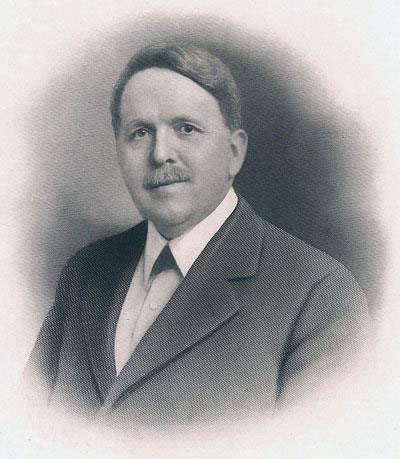
Dr. William Fitzgerald
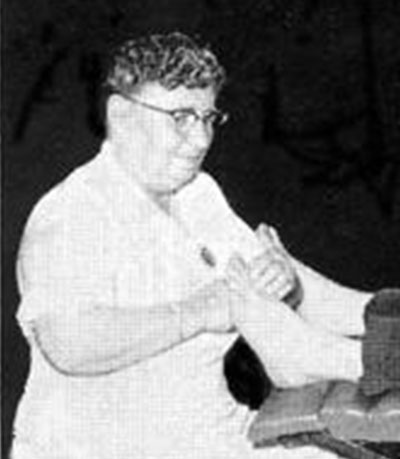
First of all, it is NOT foot massage....
Foot and Hand Reflexology is a science based on the principle that there are reflex areas on the hands and feet, which correspond to all body parts.
The physical act of applying specific pressure using thumb, finger and hand techniques result in stress reduction, which causes a physiological change in the body. We do not massage the feet.
Is there any scientific basis to Reflexology?
For more than a century now, an international array of documented scientific work has validated the results of Reflexology, including:
Reflexology is used in European hospitals for pain management for terminally ill patients, resulting in better quality of life with reduced pain.
Reflexology enhances the performance of U.S. athletes and reduces pain from injury and overwork. C. Issel Reflexology; Art, Science & History.
In Great Britain, reflexology is part of the National Health Service. Of the 26% of Danes who have tried reflexology as a complementary therapy, 73% have experienced health benefits, including increased energy, improved mood and improved sleep.
Reflexology is a valuable tool for reducing the effects of Premenstrual Syndrome, as reported in the Medical Journal of Obstetrics & Gynecology in 1993.
Continuing research shows Reflexology is gaining more respect and acceptance by scientists and health care professionals, as a valid complimentary modality in the health field.
What does Reflexology do?
The Ingham Method® of Reflexology is used primarily for relaxing tension. It promotes the body's ability to adjust and balance during times of stress. Simply taking time out to relax can help you let go of tension and enjoy a feeling of restored balance in your mind and body.
Beyond relaxation, reflexology has been shown to improve poor circulation. Improving circulation boosts the supply of oxygen and nutrients to your muscles and other tissues, and speeds the elimination of waste products such as lactic acid and stress hormones.
This, in turn, reduces stress, muscle tension and soreness, decreases healing time for injuries and reduces swelling from injuries or illness.
It also improves poor circulation problems such as immune function, skin tone, and the ability to concentrate. Because of this, many actual foot problems may be helped such as plantar fasciitis, ball of foot pain, heel pain, etc.
Can Reflexology make a
condition worse?
No, it will not make any condition more acute. It helps nature to normalize body functions. A Reflexology series decreases the stress that can affect your health. It is a safe effective way to Better Health. In fact, it can also help sore feet!
Is any special equipment needed?
Only the practitioner's hands are used, making it a safe, simple, yet effective method without the use of gadgets.
Something that is sorely needed in our Low Touch, High Tech world. Reflexology sessions are non-intrusive: no greasy oils are used and only your socks and shoes are removed.
What is a session like?
Your first session will likely begin with a brief introduction of reflexology and our work. You will then be comfortably sitted in a reclining chair, as your practitioner begins to apply thumb or finger pressure to your feet.
Responses to reflexology vary widely. Certain areas may feel more sensitive or tender than others. As we work the reflexes in your feet and you begin to relax, the tenderness may begin to lessen. It is vital to stimulate all the reflexes; therefore we will not avoid the tender areas, but will work within your comfort level in ways that minimize pain. Always tell us if you feel any discomfort so the pressure applied to your feet can be adjusted.
After a session you may feel calm and relaxed or energized and rejuvenated. Some people initially experience fatigue after a session, but notice an increase of energy or a lessoning of stress over the following hours or days.
The more you receive reflexology, the more benefits you are likely to notice. \We can discuss the best frequency of appointments to meet your specific needs.
In addition, we will be happy to help you learn to work on your own reflexes, thus providing you with an excellent self-care tool. As you begin to experience feelings of well-being from your sessions, you may also become more aware of areas of tension in your body and how it feels to be truly relaxed.
You can find reflexology charts and
text books in our SHOP
Foot and Hand Reflexology is a science based on the principle that there are reflex areas on the hands and feet, which correspond to all body parts.
The physical act of applying specific pressure using thumb, finger and hand techniques result in stress reduction, which causes a physiological change in the body. We do not massage the feet.
Is there any scientific basis to Reflexology?
For more than a century now, an international array of documented scientific work has validated the results of Reflexology, including:
Reflexology is used in European hospitals for pain management for terminally ill patients, resulting in better quality of life with reduced pain.
Reflexology enhances the performance of U.S. athletes and reduces pain from injury and overwork. C. Issel Reflexology; Art, Science & History.
In Great Britain, reflexology is part of the National Health Service. Of the 26% of Danes who have tried reflexology as a complementary therapy, 73% have experienced health benefits, including increased energy, improved mood and improved sleep.
Reflexology is a valuable tool for reducing the effects of Premenstrual Syndrome, as reported in the Medical Journal of Obstetrics & Gynecology in 1993.
Continuing research shows Reflexology is gaining more respect and acceptance by scientists and health care professionals, as a valid complimentary modality in the health field.
What does Reflexology do?
The Ingham Method® of Reflexology is used primarily for relaxing tension. It promotes the body's ability to adjust and balance during times of stress. Simply taking time out to relax can help you let go of tension and enjoy a feeling of restored balance in your mind and body.
Beyond relaxation, reflexology has been shown to improve poor circulation. Improving circulation boosts the supply of oxygen and nutrients to your muscles and other tissues, and speeds the elimination of waste products such as lactic acid and stress hormones.
This, in turn, reduces stress, muscle tension and soreness, decreases healing time for injuries and reduces swelling from injuries or illness.
It also improves poor circulation problems such as immune function, skin tone, and the ability to concentrate. Because of this, many actual foot problems may be helped such as plantar fasciitis, ball of foot pain, heel pain, etc.
Can Reflexology make a
condition worse?
No, it will not make any condition more acute. It helps nature to normalize body functions. A Reflexology series decreases the stress that can affect your health. It is a safe effective way to Better Health. In fact, it can also help sore feet!
Is any special equipment needed?
Only the practitioner's hands are used, making it a safe, simple, yet effective method without the use of gadgets.
Something that is sorely needed in our Low Touch, High Tech world. Reflexology sessions are non-intrusive: no greasy oils are used and only your socks and shoes are removed.
What is a session like?
Your first session will likely begin with a brief introduction of reflexology and our work. You will then be comfortably sitted in a reclining chair, as your practitioner begins to apply thumb or finger pressure to your feet.
Responses to reflexology vary widely. Certain areas may feel more sensitive or tender than others. As we work the reflexes in your feet and you begin to relax, the tenderness may begin to lessen. It is vital to stimulate all the reflexes; therefore we will not avoid the tender areas, but will work within your comfort level in ways that minimize pain. Always tell us if you feel any discomfort so the pressure applied to your feet can be adjusted.
After a session you may feel calm and relaxed or energized and rejuvenated. Some people initially experience fatigue after a session, but notice an increase of energy or a lessoning of stress over the following hours or days.
The more you receive reflexology, the more benefits you are likely to notice. \We can discuss the best frequency of appointments to meet your specific needs.
In addition, we will be happy to help you learn to work on your own reflexes, thus providing you with an excellent self-care tool. As you begin to experience feelings of well-being from your sessions, you may also become more aware of areas of tension in your body and how it feels to be truly relaxed.
You can find reflexology charts and
text books in our SHOP
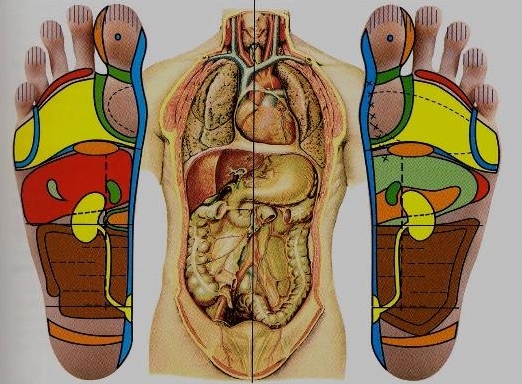
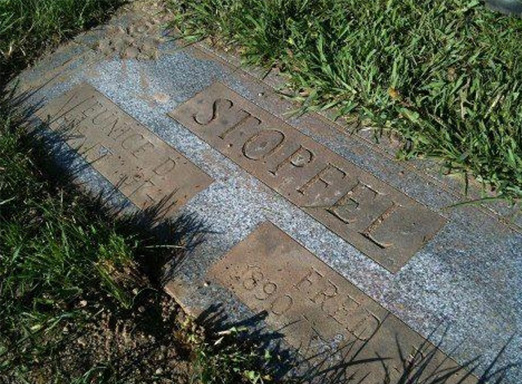
Eunice D. Ingham’s gravestone
Reflexology is not a substitute for medical intervention, and it is important that for any serious medical conditions, diagnosis is made by a medical professional. As reflexologists, we cannot claim to cure, prescribe or diagnose, but many believe it is a great therapy to re-balance, relax and restore.


Eunice D. Ingham’s gravestone
Reflexology is not a substitute for medical intervention, and it is important that for any serious medical conditions, diagnosis is made by a medical professional. As reflexologists, we cannot claim to cure, prescribe or diagnose, but many believe it is a great therapy to re-balance, relax and restore.


Eunice D. Ingham’s gravestone
Reflexology is not a substitute for medical intervention, and it is important that for any serious medical conditions, diagnosis is made by a medical professional. As reflexologists, we cannot claim to cure, prescribe or diagnose, but many believe it is a great therapy to re-balance, relax and restore.
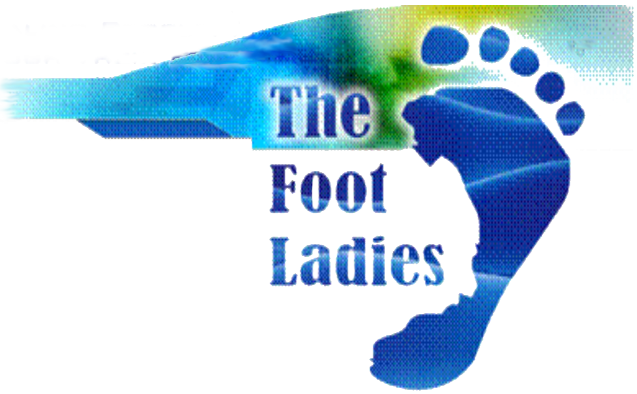
Since they first learned about Reflexology in the early 60's, mother-daughter team Muff and Bobbi Warren studied, practiced and taught Foot and Hand Reflexology worldwide.
The FootLadies,
Copyright 2022
All Rights Reserved.
San Diego, La Mesa, CA
619-723-5276
Bobbi@TheFootLadies.com

